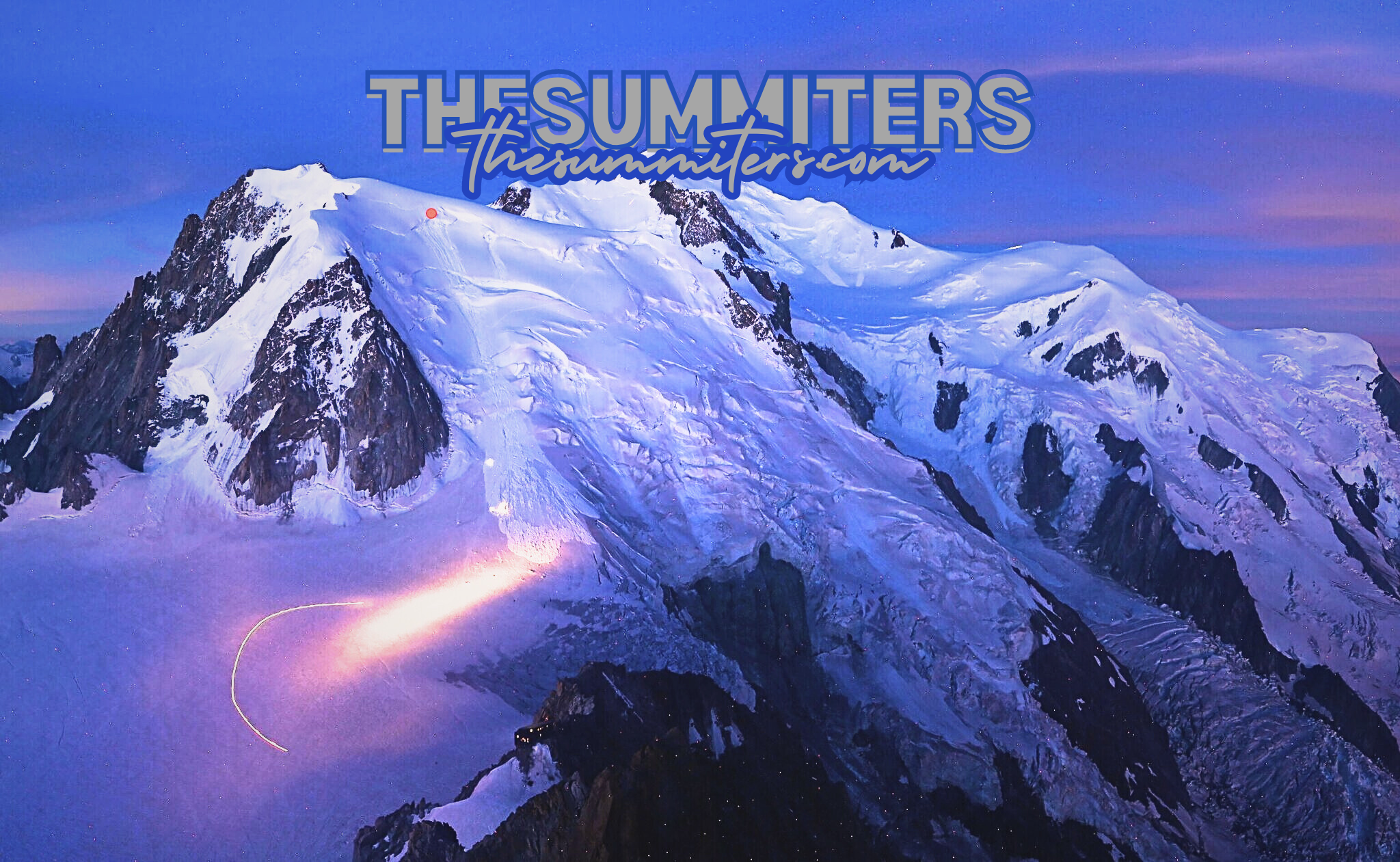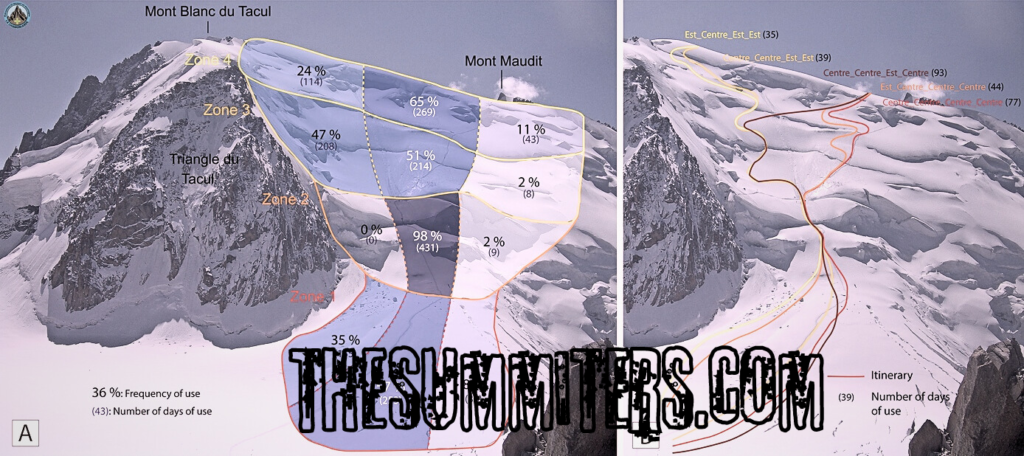Serac Collapse Near Mont Blanc Results in One Fatality and Four Injuries

This year once again Mont Blanc du Tacul has witnessed a destructive event during the peak climbing season.
Early this morning August 5 at around 3 a.m., a massive piece of serac detached from the upper north face of Mont Blanc du Tacul. This peak a dramatic part of the Mont Blanc massif lies roughly midway between the Aiguille du Midi and Mont Blanc itself.
The resulting avalanche poured down towards the Col du Midi striking a group of climbers who were soaring Mont Blanc via the popular Trois Monts Route. The slide impacted between 11 and 15 climbers. Unfortunately, one climber has been confirmed dead, and four others are reported injured, with one person in critical condition.
Other Affected Climbers
The identity of the fallen climber has not been announced but it has been persistent that he was a 57 year old French. He was found on the surface of the avalanche and is accepted to have died from cardiac arrest. A 42 year old man was taken to the hospital for emergency revival and there are no updates on his condition yet. His climbing partner a 40 year old woman suffered lung injuries and was also hospitalized as reported by BFMTV.
Additionally a 17-year-old and his 58-year-old father required hospital treatment for their injuries. Thankfully at least four pairs of roped climbers avoided injury and provided aid to those in misery. Search efforts continued into the morning to locate any additional victims, but the operation was eventually suspended due to the high risk of further avalanches.
A Hazardous Area
Mont Blanc du Tacul has a tragic history of accidents. Its north side is notorious for frequent avalanches triggered by falling seracs. Climbers usually ascend the mountain via the NNW flank, known as the Epaule du Tacul. This route has been particularly perilous, with 13 climbers losing their lives between 2000 and 2022. Notable years include 2008 with eight fatalities, 2013 with two, and 2016 with three.
The path to Mont Blanc also passes through another hazardous zone after the Col Maudit, which has seen nine deaths in 2012 and three in 2016.
Recent warm weather in the Alps has heightened the risk of falling rocks and ice. However, serac falls on Mont Blanc du Tacul can also occur in colder conditions and even at night. French glaciologist Melaine Le Roi noted on X that the area where yesterday’s serac fall happened was not the most dangerous on the mountain; similar incidents have frequently occurred in other, more hazardous locations.

Hazards on Mont Blanc Routes
Climbers tackling Mont Blanc typically face a choice between two main routes: the standard Voie Royale, which ascends from Saint-Gervais via the Dôme du Goûter, or the more challenging Trois Monts route.
The Voie Royale, while popular, involves crossing the perilous Grand Couloir, infamous for its frequent rockfalls and grimly nicknamed the Bowling Alley or Corridor of Death.
In contrast, the Trois Monts route offers a more scenic and rewarding experience, though it is longer. It begins at the Cosmiques mountain hut near the Col du Midi which can be transferred by cable car. This route crosses three peaks over 4000 meters. Mont Blanc du Tacul 4248m, Mont Maudit 4465m and in the end Mont Blanc 4809m the upper peak in the European mounts.
A thorough study by Ludovic Ravanel and his team published in the Journal of Alpine Research last year provides a detailed relation of the risks related with both routes.
The study reveals that the Gouter route is particularly risky with an average of 3.7 deaths per year. During the summer of 2019, 17,768 climbers crossed the Grand Couloir during which seismological instruments recorded 2,648 rockfalls. The researchers estimate that the average risk of death from these rockfalls is approximately 1.7 in 10,000.
On the other hand, the Trois Monts route, which experiences an average of 0.6 deaths annually, saw 6,770 climbers in the summer of 2017, with 31 serac falls not related to temperature. The risk of death on this route is notably lower, at about 0.83 in 10,000—roughly half the risk associated with the Gouter route.
